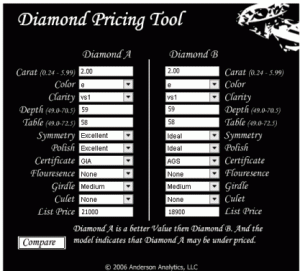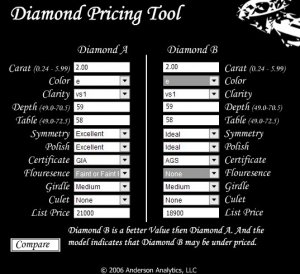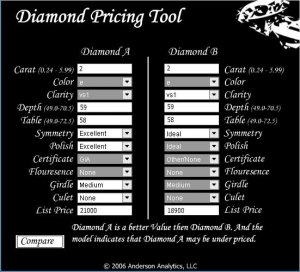Found this link on the web today. It’s a model that helps you decide which diamond to buy, and weather you are paying too much. It takes into consideration all the various C’s. Very cool, and seems very accurate.
http://www.andersonanalytics.com/diamond.htm
-GX2002













300x240.png)